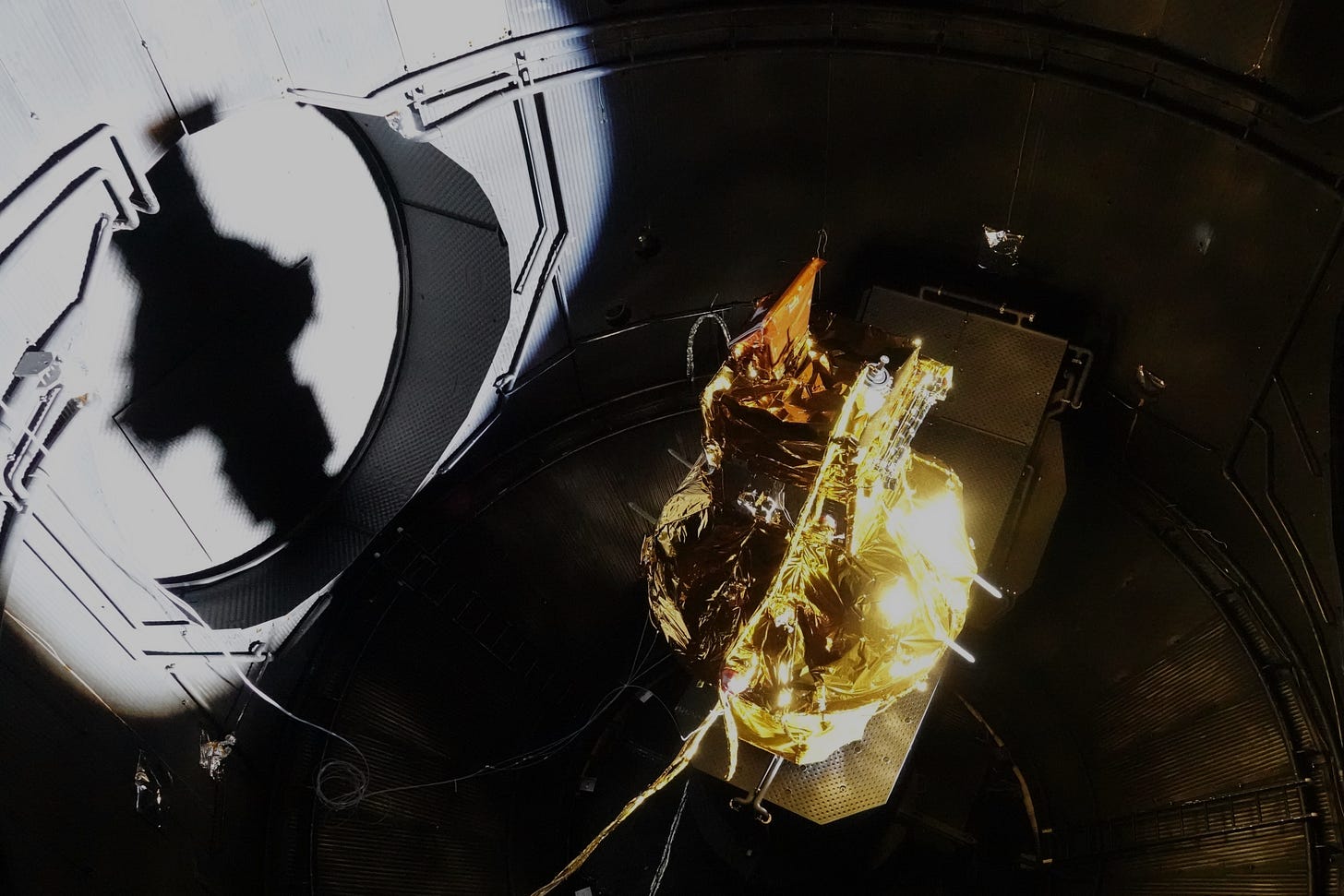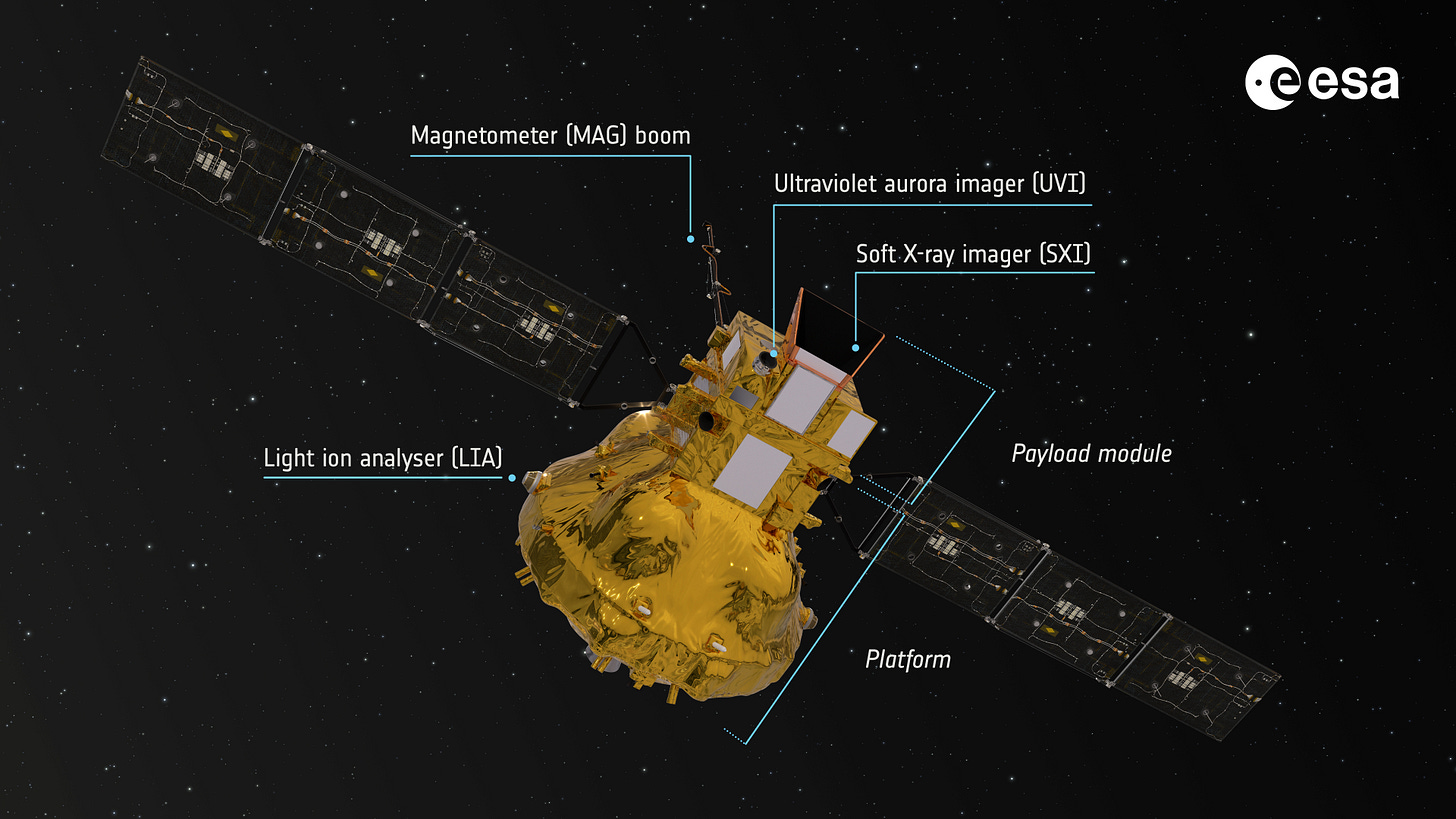European-Chinese Space Weather Satellite Completes Major Testing
SMILE is moving ever closer to launch!

The joint European Space Agency-Chinese Academy of Sciences SMILE, or Solar wind Magnetosphere Ionosphere Link Explorer, spacecraft is slowly progressing toward space, having recently completed many tests in Europe over the past few months.
Prior to that. in September 2024 the spacecraft completed development work in China and arrived in the Netherlands in December 2024. At the end of January, the two modules of the spacecraft were joined together at the European Space Agency’s ESTEC facility in the Netherlands.
Beginning in April, SMILE was brought into the Maxwell Test Chamber to undergo electromagnetic and radio interference tests. Using the chambers’ anechoic absorbers on all surfaces, tests were completed to ensure that the spacecraft’s instruments and electronics do not interfere with one another, allowing all systems to run together concurrently. The test also verified that electronics on the launch vehicle won’t conflict with SMILE.
Following interference tests, SMILE was placed onto precise spacecraft measurement scales to verify its weight and confirm where the spacecraft’s center of gravity (alternatively called center of mass) is over four days. After that, and to end April, the spacecraft conducted a shake test, where it was shaken vigorously to ensure it can withstand vibrations experienced during launch.
Between major tests, SMILE’s solar panels were deployed to ensure the mechanism to do so is functional, and blasted with light to verify that its thousands of solar cells on the panels can generate electrical power.
For its final major test, the spacecraft was placed in the Large Space Simulator for vacuum testing. In the simulator, SMILE experienced vacuum conditions, along with a recreation of the Sun’s intense heat, to confirm that the spacecraft, its instruments, and various systems can withstand the harsh environment of space. Upon completion of the test, SMILE Project Manager David Agnolon commented:
“We can now say that Smile is 100% ready for space and ready to deliver its scientific data to better understand our planet’s magnetic shield and how it responds to the solar wind. This is testament to years of hard work from industry across Europe and China.”

For the remainder of July, the SMILE team is re-checking the boom that holds the magnetometer at the end and the cover of the ultraviolet camera to ensure that nothing was damaged during the final test. Following that, the spacecraft is planned to go through a few software and operational tests before departing for its launch site.
SMILE is currently scheduled to ship to its launch site, the Guiana Space Centre, located in French Guiana, South America, towards the end of the year, where it is planned to be ready for launch before the New Year. European Space Agency Director General Josef Aschbacher expects the launch atop a Vega-C rocket will take place in 2026.
Once in space, SMILE is planned to operate in a high-inclination elliptical orbit, and the spacecraft will make quasi-continuous observations of key regions in near-Earth space with both remote-sensing and in-situ instruments. The mission aims to build up a complete understanding of the Sun-Earth connection by measuring the solar wind and its dynamic interaction with Earth’s magnetosphere.

The SMILE spacecraft weighs approximately 2,300 kilograms, with the European Space Agency providing the launch services, payload module, and one scientific instrument, while the Chinese Academy of Sciences is contributing three instruments as well as the science and mission operations. Instruments and their contributors include:
Soft X-ray Imager: Developed, built, and calibrated at the University of Leicester, United Kingdom, and other institutions throughout Europe. The charge-coupled devices are procured from e2v by the European Space Agency and calibrated by The Open University, also in the UK.
UltraViolet Imager: A joint venture between the University of Calgary in Canada, the Chinese National Space Science Centre, the Chinese Academy of Sciences, the Polar Research Institute of China, and Centre Spatial de Liège, Belgium.
Light Ion Analyser: A joint venture between the Chinese National Space Science Centre, the Chinese Academy of Sciences, University College London's Mullard Space Science Laboratory, UK, and the Laboratoire de Physique des Plasmas, France.
A Magnetometer: A joint venture between the Chinese National Space Science Centre, the Chinese Academy of Sciences, and the Space Research Institute, Austrian Academy of Sciences.
SMILE is the most recent collaboration between the European Space Agency and the Chinese Academy of Sciences, following the Einstein Probe, instruments on Chang’e 6, and the SVOM mission with France.
Throughout the process of getting SMILE to space, the European Space Agency has been producing a short video series on the mission. The three episodes released so far are embedded below.



